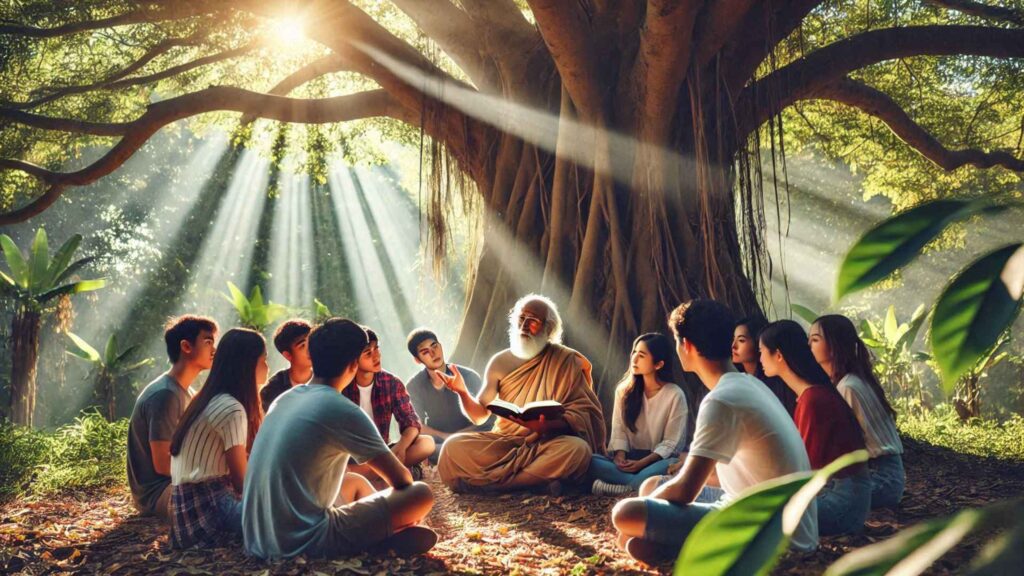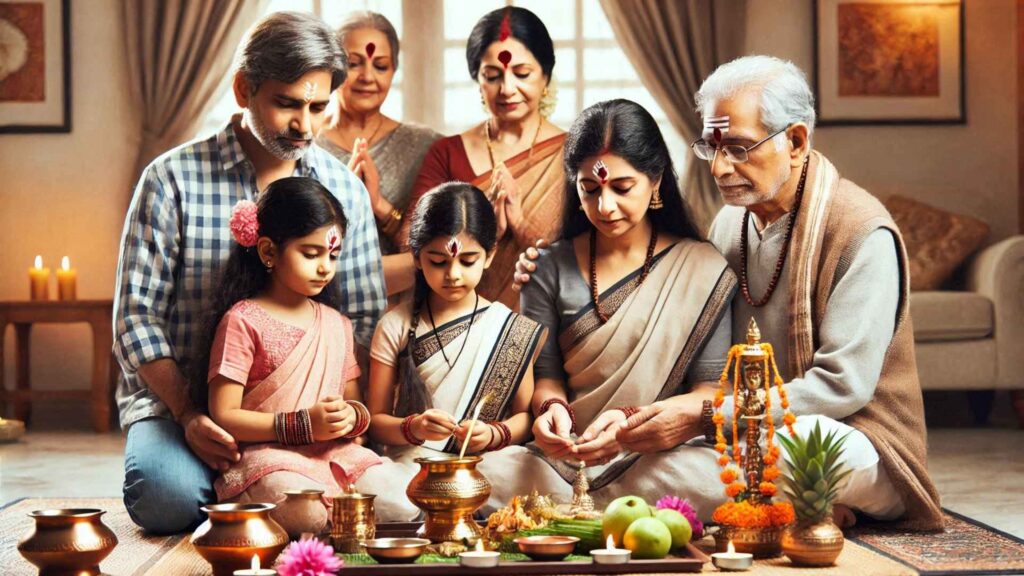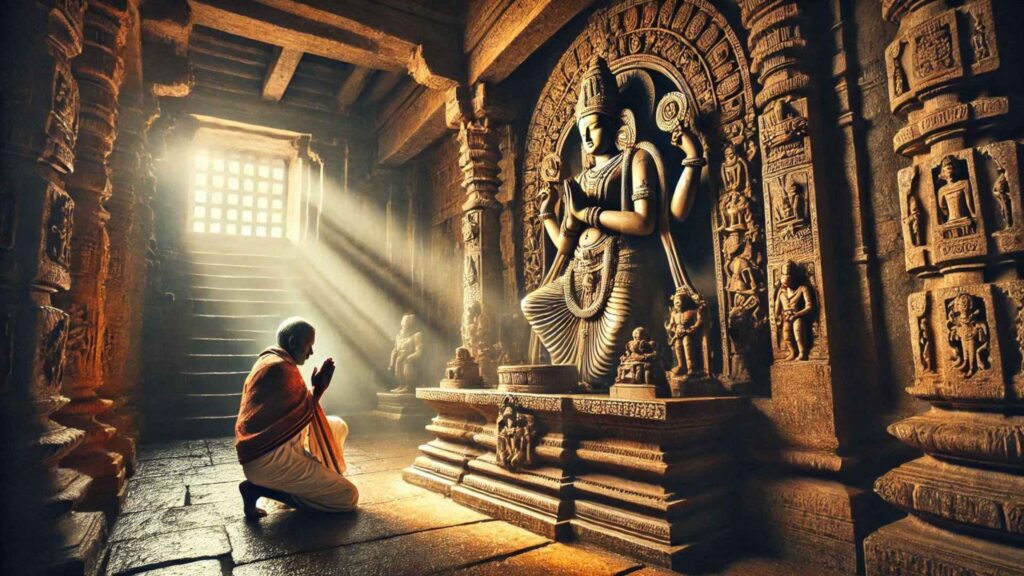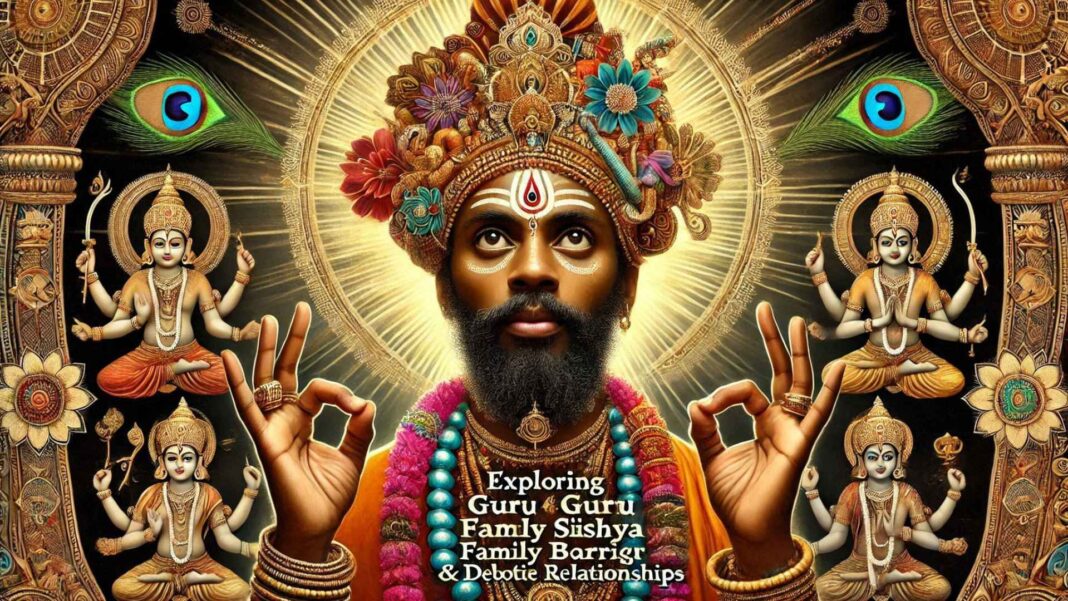1. The Spiritual Meaning of Elements in Hinduism: Guru-Shishya, Family Bonds, Marriage, and Devotee-Deity Relationship
Hook Statement: What gives meaning to life’s relationships and rituals? In Hinduism, the spiritual essence of bonds and traditions serves as a guide to understanding the divine within the everyday.
Overview of Sacred Elements: Hinduism teaches that every element of life—whether it is a bond, a ritual, or a relationship—holds profound spiritual significance. The Guru-Shishya (teacher-student) relationship, family bonds, marriage, and devotee-deity connection represent the sacred threads that bind the material and spiritual worlds.
Read More About sacred texts
Historical Significance: From the earliest scriptures, these sacred elements have symbolized the interconnectedness of all beings with the divine. Vedic traditions and epics like the Ramayana and Mahabharata highlight their centrality in guiding human behavior and spiritual progress.
Why They Matter Today: In the modern world, these sacred elements remain relevant. They nurture personal growth, foster community harmony, and provide a spiritual foundation for navigating life’s challenges.
2. Historical Background
Guru-Shishya Tradition:

- Vedic Roots: Originating in the Vedic age, the Guru-Shishya bond emphasized oral transmission of sacred knowledge. Gurus like Vasistha and disciples like Rama highlight this dynamic.
- Mythology: The Bhagavad Gita depicts Krishna as the ultimate guru, guiding Arjuna to self-realization.
- Evolution: Gurukuls (ancient residential schools) were central to Hindu education. With modernization, the tradition transformed into spiritual and philosophical mentorship.
- Regional Variations: While ashrams flourished across India, the practices varied—Kerala emphasized tantric teachings, while Northern India focused on Vedic recitation.
Family Bonds:

- Scriptural Foundation: The Manusmriti and Dharmashastras outline familial roles as duties (dharma), reflecting the cosmic order.
- Epics: Stories of Rama’s devotion to his parents and Yudhisthira’s loyalty to family in the Mahabharata showcase the importance of family bonds.
- Evolution: From large joint families in ancient times to nuclear families today, the spiritual essence of family remains intact.
- Regional Influence: Kerala’s matrilineal traditions and North India’s patriarchal systems offer diverse interpretations.
Marriage:

- Mythological Unions: The divine marriages of Shiva-Parvati and Rama-Sita symbolize cosmic balance and spiritual unity.
- Ritual Origins: Vedic hymns detail marriage as a samskara (sacrament) for procreation and societal harmony.
- Historical Adaptations: While Vedic ceremonies were minimalist, modern weddings incorporate regional and cultural diversity.
- Regional Practices: Gujarat’s garba, Tamil Nadu’s tying of the sacred thread, and Bengal’s sindoor daan illustrate regional differences.
Devotee-Deity Relationship:

- Bhakti Movement: Saints like Meera Bai and Tulsidas emphasized personal devotion as a pathway to salvation.
- Temple Worship: Temples like Tirupati and Puri Jagannath have been focal points for devotional practices.
- Cultural Artifacts: Temple art, hymns, and rituals immortalize the sacred connection between devotees and deities.
- Regional Expressions: Tamil Nadu’s Alvars and Maharashtra’s Warkari tradition are examples of localized devotion.
3. Spiritual Significance
Guru-Shishya:
- Religious Role: The guru is seen as a guide who leads the student toward enlightenment, akin to a divine figure.
- Symbolism: The relationship embodies trust, humility, and surrender, essential for spiritual awakening.
- Connection to Deities: Often compared to divine mentorships, such as Shiva imparting wisdom to Parvati.
- Energy Properties: The guru’s teachings are believed to awaken the kundalini (spiritual energy) within the disciple.
Family Bonds:
- Spiritual Energy: Families are microcosms of cosmic unity, reflecting the interplay of dharma, artha (prosperity), and moksha.
- Role in Worship: Family-centered festivals like Diwali and Navratri highlight shared spiritual practices.
- Symbolic Unity: The family symbolizes interconnectedness and mutual support in spiritual growth.
Marriage:
- Sacred Union: Marriage represents the merging of two souls to fulfill spiritual and societal responsibilities.
- Cosmic Balance: Reflects Shiva (masculine) and Shakti (feminine) energies in harmonious union.
- Rituals: The sacred fire, mantras, and vows during marriage ceremonies invoke divine blessings.
- Philosophical Role: Emphasizes love, respect, and shared dharma.
Devotee-Deity Relationship:
- Bhakti Yoga: Encourages unconditional love, surrender, and devotion to the divine.
- Symbolism: Offerings, prayers, and temple rituals serve as mediums for divine connection.
- Spiritual Transformation: Devotion purifies the mind and aligns the devotee’s soul with universal truth.
- Philosophical Significance: Emphasizes the personal journey of aligning with the divine through selfless devotion.
4. Practical Application
Guru-Shishya:
- Daily Practices: Disciples honor their gurus through offerings, meditation, and study of sacred texts.
- Modern Adaptations: Online classes, workshops, and spiritual retreats help maintain the tradition in contemporary times.
Family Bonds:
- Ritual Practices: Joint prayers, meal blessings, and festival celebrations strengthen spiritual and emotional ties.
- Home Worship: Families often create home altars for shared worship.
Marriage:
- Ceremonial Practices: Key rituals include pheras (circumambulations around the fire) and the mangalsutra (sacred thread) ceremony.
- Modern Trends: Eco-friendly weddings and simplified ceremonies reflect modern adaptations of ancient traditions.
Devotee-Deity Relationship:
- Daily Devotion: Includes chanting, offerings, and lighting lamps at home or in temples.
- Festivals: Major celebrations like Janmashtami and Durga Puja focus on communal worship.
- Home Altars: Many families maintain private shrines for daily prayers and meditation.
5. Cultural Impact
Guru-Shishya:
- Art and Literature: Classical dance and music forms often depict the bond between guru and disciple.
- Festivals: Guru Purnima celebrates the significance of teachers.
Family Bonds:
- Societal Influence: Promotes virtues like compassion, respect, and responsibility.
- Festivals: Events like Raksha Bandhan and Pongal emphasize family unity.
Marriage:
- Cultural Expressions: Weddings inspire regional art, music, and literature.
- Social Impact: Strengthens community ties and preserves traditions.
Devotee-Deity Relationship:
- Artistic Depictions: Temples and sculptures illustrate the sacred bond.
- Festivals: Events like Ratha Yatra and Holi bring communities together in devotion.
6. Conservation/Preservation
Guru-Shishya:
- Challenges: Decline of traditional gurukuls due to modernization.
- Efforts: Revival through global ashrams and educational initiatives.
Family Bonds:
- Challenges: Urbanization and individualism threaten traditional family structures.
- Preservation Efforts: Campaigns promoting family rituals and values.
Marriage:
- Challenges: Increasing commercialization and environmental concerns.
- Sustainability: Promoting eco-friendly weddings and minimalist ceremonies.
Devotee-Deity Relationship:
- Environmental Aspects: Eco-friendly idol immersions and temple management are gaining traction.
- Conservation: Protecting ancient temples and devotional practices.
7. Expert Insights
- Religious Scholars: Swami Vivekananda emphasized, “The guru is the gateway to enlightenment.”
- Scientific Studies: Research highlights the psychological benefits of family-centered rituals and practices.
- Modern Interpretations: Sociologists stress balancing traditional and contemporary values.
- Expert Opinions: Cultural historians advocate for preserving the spiritual essence of Hindu traditions.
8. Conclusion
The spiritual meaning of Hindu elements—Guru-Shishya, family bonds, marriage, and devotee-deity relationships—offers timeless wisdom for personal and societal growth. These elements bridge the material and spiritual realms, guiding individuals toward a harmonious existence.


